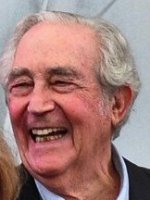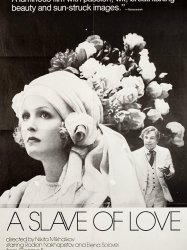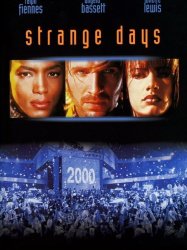Film is a american film of genre Drama with Buster Keaton
Film (1965)

If you like this film, let us know!
Film is a 1965 film written by Samuel Beckett, his only screenplay. It was commissioned by Barney Rosset of Grove Press. Writing began on 5 April 1963 with a first draft completed within four days. A second draft was produced by 22 May and a forty-leaf shooting script followed thereafter. It was filmed in New York in July 1964.
Beckett’s original choice for the lead – referred to only as “O” – was Charlie Chaplin, but his script never reached him. Both Beckett and the director Alan Schneider were interested in Zero Mostel and Jack MacGowran. However, the former was unavailable and the latter, who accepted at first, became unavailable due to his role in a "Hollywood epic." Beckett then suggested Buster Keaton. Schneider promptly flew to Los Angeles and persuaded Keaton to accept the role along with "a handsome fee for less than three weeks' work." James Karen, who was to have a small part in the film, also encouraged Schneider to contact Keaton.
The filmed version differs from Beckett's original script but with his approval since he was on set all the time, this being his only visit to the United States. The script printed in Collected Shorter Plays of Samuel Beckett (Faber and Faber, 1984) states:
“This is the original film project for Film. No attempt has been made to bring it into line with the finished work. The one considerable departure from what was imagined concerns the opening sequence in the street. This was first shot as given, then replaced by a simplified version in which only the indispensable couple is retained. For the rest the shooting script followed closely the indications in the script.”
It was remade by the British Film Institute (1979, 16 mm, 26 minutes) without Beckett’s supervision, as Film: a screenplay by Samuel Beckett. David Rayner Clark directed Max Wall.
It first appeared in print in Eh Joe and Other Writings (Faber and Faber, 1967).
Synopsis
Throughout the first two parts almost everything is seen through the eye of the camera (designated in the script as E), although there are occasional moments when O's perception is seen. In the third part, much more of O’s perception of the room and its contents is given. In order to distinguish between the two perceptions, objects seen by O were shot through a lens-gauze, blurring his perception while E's perception was shot without gauze or filters, keeping the images sharp.Actors

Buster Keaton
(The Man)

James Karen
(Passerby)
Comments
Leave comment :
Suggestions of similar film to Film
There are 123 films with the same actors, 61823 with the same cinematographic genres, 537 films with the same themes, to have finally 70 suggestions of similar films.If you liked Film, you will probably like those similar films :

A Slave of Love (1976)
, 1h34Directed by Nikita Mikhalkov
Origin Russie
Genres Drama, Comedy, Romance
Themes Films about films
Actors Oleg Basilashvili, Aleksandr Kaliaguine, Elena Solovei, Vera Kouznetsova, Nikita Mikhalkov, Iouri Bogatyriov
Rating72%





The film is set in the Autumn/Fall of 1918, during the Russian Civil War.

Directed by Ed Wood
Origin USA
Genres Drama, Comedy, Documentary
Themes Films about films, Films about sexuality, Films about pornography, Documentary films about business, Documentary films about the film industry, Documentary films about films
Actors Ed Wood, Duke Moore
Rating58%






Mekong Hotel (2012)
, 56minutesDirected by Apichatpong Weerasethakul
Origin United-kingdom
Genres Drama, Fantastic, Documentary
Themes Films about films, Documentary films about the film industry
Actors Jenjira Pongpas, Apichatpong Weerasethakul
Rating60%





Dans un hôtel surplombant le Mékong, à Nong Khai, dans la frontière entre la Thaïlande et le Laos, le cinéaste Apichatpong Weerasethakul et son équipe travaille sur un film intitulé Ecstasy Garden. Entre documentaire et fiction, nous assistons aux répétitions du film qui raconte la rencontre dans une terrasse d'hôtel au bord du fleuve Mékong entre Phon, une jeune fille, et Tong, un jeune garçon. La jeune fille apprend l'existence d'un "pob", un fantôme cannibale, et que sa mère Tante Jen en est un. La relation avec les deux parentes va peu à peu changer.

Notting Hill (1999)
, 2h4Directed by Roger Michell
Origin United-kingdom
Genres Drama, Comedy, Romantic comedy, Romance
Themes Films about films, Films about television
Actors Julia Roberts, Hugh Grant, Hugh Bonneville, James Dreyfus, Rhys Ifans, Emma Chambers
Rating72%





William "Will" Thacker (Hugh Grant) owns an independent travel bookshop in Notting Hill. He is divorced and shares his house with an eccentric, uninhibited Welshman named Spike (Rhys Ifans).

My Week with Marilyn (2011)
, 1h39Directed by Simon Curtis, Simon Curtis
Origin United-kingdom
Genres Drama, Biography, Romance
Themes Films about films, Films about television
Actors Michelle Williams, Kenneth Branagh, Eddie Redmayne, Julia Ormond, Emma Watson, Judi Dench
Rating68%





Following his graduation from university in 1956, aspiring filmmaker Colin Clark (Eddie Redmayne) travels to London to get a job on Laurence Olivier's (Kenneth Branagh) next production. Hugh Perceval (Michael Kitchen) tells Colin that there are no jobs available, but he decides to wait for Olivier, whom he once met at a party. Olivier and his wife, Vivien Leigh (Julia Ormond), eventually show up and Vivien encourages Olivier to give Colin a job on his upcoming film The Prince and the Showgirl, starring Marilyn Monroe (Michelle Williams). Colin's first task is to find a suitable place for Marilyn and her husband, Arthur Miller (Dougray Scott), to stay at while they are in England. The press find out about the house, but Colin reveals he secured a second house just in case, impressing Olivier and Marilyn's publicist, Arthur P. Jacobs (Toby Jones).

Strange Days (1995)
, 2h25Directed by Kathryn Bigelow
Origin USA
Genres Drama, Science fiction, Thriller, Action, Crime
Themes Films about films, Films about computing, Medical-themed films, Psychologie, Films about sexuality, Snuff films in fiction, Films about television, Rape in fiction, Films set in the future, Films about psychiatry, Political films, Cyberpunk films, Dystopian films, Children's films, Anticipation
Actors Ralph Fiennes, Angela Bassett, Juliette Lewis, Tom Sizemore, Vincent D'Onofrio, Michael Wincott
Rating71%





In the last two days of 1999, Los Angeles has become a dangerous war zone. As a group of criminals rob a Chinese restaurant, the event is recorded by a robber wearing a 'SQUID', or "Superconducting Quantum Interference Device", an illegal electronic device which records events directly from the wearer's cerebral cortex, and when played back through a MiniDisc-like device called a "deck", allow a user to experience the recorder's memories and physical sensations. Lenny Nero is a former LAPD officer turned black marketeer who deals in bootleg SQUID recordings. His main supplier, Tick (Richard Edson), tries to sell the robbery clip to him. Lenny eventually agrees to buy it at a reduced price, having to cut out the last part where the rig records the robber's death by falling; clips that record the wearer's death are known as "blackjack" (snuff) clips, because the experience is described as "jacking into the big black" by Tick.
 , 1h49
, 1h49Directed by Andrzej Żuławski, Philippe Lopes-Curval, Laurent Ferrier
Origin France
Genres Drama, Thriller, Romance
Themes Films about films, Films about television, Photographie
Actors Romy Schneider, Jacques Dutronc, Fabio Testi, Klaus Kinski, Claude Dauphin, Roger Blin
Rating69%





Servais Mont, a photographer, meets Nadine Chevalier who earns her money starring in cheap soft-core movies. Trying to help her, he borrows the money from the loan sharks to finance the theatrical production of Richard III and gives Nadine a part. Nadine is torn between Servais, with whom she is falling in love, and her husband Jacques, to whom she has moral obligations.

Matinee (2012)
, 1h54Genres Drama, Romance
Themes Films about films
Actors Maqbool Salmaan, Mythili Balachandran, Lena, Thalaivaasal Vijay, Valsala Menon, Sasi Kalinga
Rating55%





The plot of this film revolves around two people who come from different backgrounds but are united by fate. Najeeb (Maqbool Salmaan) is a youngster from an orthodox background who wishes to be a film star while Savithri (Mythili) is a motherless girl from an economically backward family who lands up in the film industry to escape her abusive father (Sasi Kalinga). The duo get a chance to be the lead pair in a film that appears to be an ordinary love story but turns out to be a sleaze-fest when it releases. The pair, subsequently, is ostracised from society.

The Star Maker (1995)
, 1h53Directed by Giuseppe Tornatore
Origin Italie
Genres Drama, Romance
Themes Films about films, Seafaring films, Transport films
Actors Sergio Castellitto, Antonella Attili, Tiziana Lodata, Leopoldo Trieste, Jane Alexander, Tony Sperandeo
Rating73%





In 1953, Joe Morelli is traveling rural Sicily, offering to take screen tests of wannabe actors, for a fee. He claims to work for big Roman film studios, but he's a fraud. He meets several people who express their deepest feelings and secrets in front of the camera.In one of his stops he meets a young girl, Beata, who is a convent girl, she attaches to him, despite his protestation.

Sullivan's Travels (1941)
, 1h30Directed by Preston Sturges
Origin USA
Genres Drama, Comedy, Adventure, Romance
Themes Films about films, Transport films, Films about automobiles, Road movies
Actors Joel McCrea, Veronica Lake, William Demarest, Porter Hall, Jimmy Conlin, Franklin Pangborn
Rating78%





John L. Sullivan (Joel McCrea) is a popular young Hollywood director of profitable but shallow comedies (e.g. Ants in Your Plants of 1939). Sullivan is dissatisfied despite his success and tells his studio boss, Mr. Lebrand (Robert Warwick) that he wants his next project to be a serious exploration of the plight of the downtrodden. He asks to make his next film an adaptation of O Brother, Where Art Thou?, a socially-conscious novel. Lebrand wants him to direct another lucrative comedy instead, but the idealistic Sullivan refuses to give in. He wants to "know trouble" first-hand, and plans to travel as a tramp so he can return and make a film that truly depicts the sorrows of humanity. His butler (Robert Greig) and valet (Eric Blore) openly question the wisdom of his plan.
 Connection
Connection